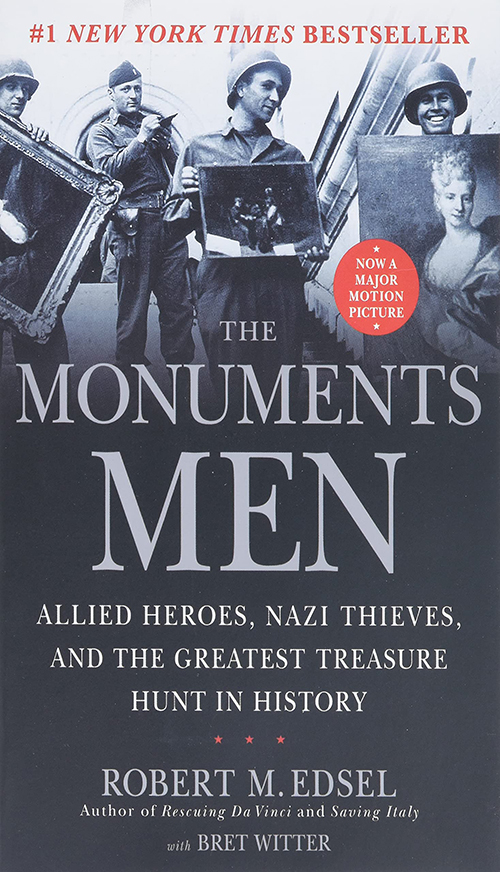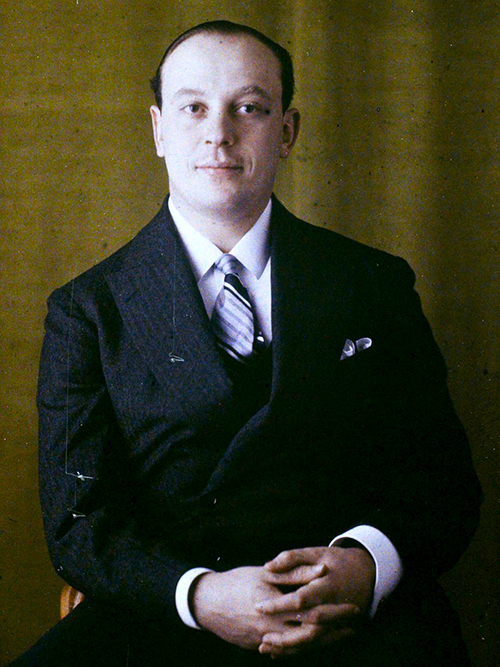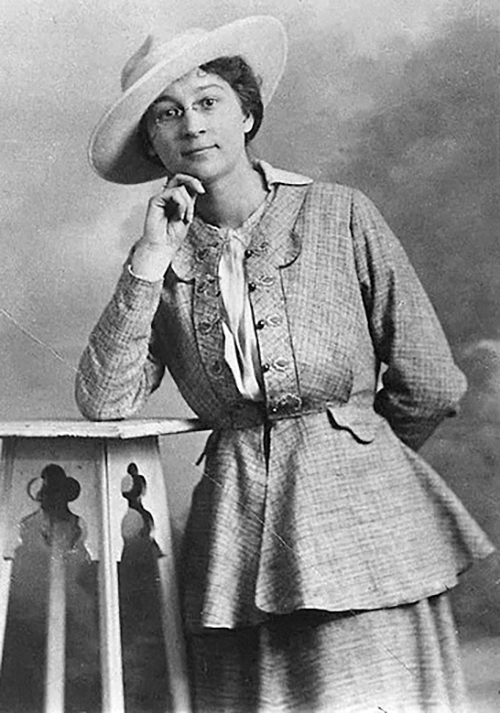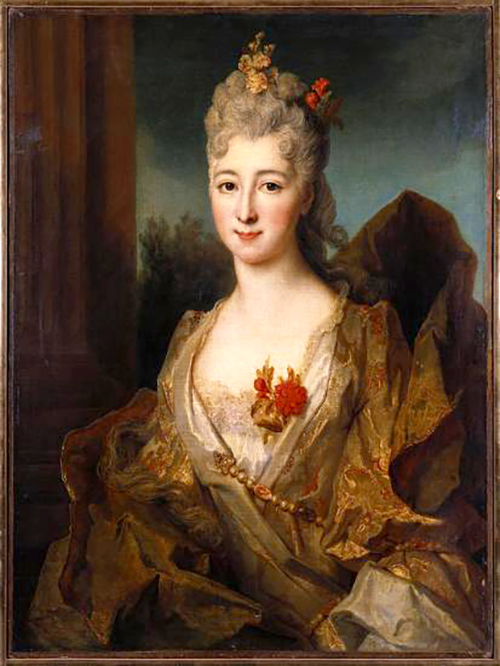|
Getting your Trinity Audio player ready...
|
Edited by: Fern Sidman
In a May 1945 photograph, captured on the grand steps of Neuschwanstein Castle in Bavaria, a portrait of a woman with porcelain skin and silver curls takes center stage, held by American soldiers still in their combat fatigues. This image, documented in a recently published New York Times report, remains a powerful reminder of the American military’s mission to reclaim art stolen by the Nazis. These soldiers were working alongside the Monuments Men, a unique U.S. Army unit charged with tracking down and recovering countless masterpieces looted during World War II. The NYT report highlighted the enduring symbolism of this photograph, which showcases not only the Monuments Men’s dedication but also the legacy of resilience embedded in Europe’s cultural heritage.
As The NYT reported, the photograph captures not only the triumph of reclaiming stolen art but also the power of imagery to encapsulate moments in history. The portrait itself, painted by Nicolas de Largillièrre, a prominent French court painter from the era of Louis XIV, stands as an artifact of resilience. Next month, Christie’s will auction this artwork, a move expected to draw interest due to the photograph’s significant connection to the Monuments Men. According to Marc Porter, chairman of Christie’s Americas, the portrait’s historical context brings it to life for collectors. In his words, as cited by The New York Times, the portrait is more than a valuable object—it carries “the depth of the story and the history.” Christie’s has assessed its value between 50,000 and 80,000 euros (about $55,000 to $88,000), yet the name of its current owner remains undisclosed.

This legendary image, according to the report in the NYT, was prominently featured on the cover of “The Monuments Men: Allied Heroes, Nazi Thieves, and the Greatest Treasure Hunt in History,” a 2009 book by Robert Edsel and Brett Witter. The book later inspired a 2014 film directed by George Clooney, further cementing the photograph’s cultural significance. Edsel, quoted in The New York Times, points out the intentional nature of the image, noting that it was likely a deliberate “photo op.” In the background stands James Rorimer, the Army captain who led the Monuments Men and was a curator at the Metropolitan Museum of Art, captured in the moment as he scribbled notes—an image of urgency, dedication, and resolve. Through this lens, The New York Times report illustrates how Rorimer and the Monuments Men symbolized hope in the wake of Nazi atrocities.
In a complex journey marked by resilience and artistry, the painting, “Portrait de femme à mi-corps” (Portrait of a Woman, Half Length) by Nicolas de Largillièrre was among the cultural treasures looted by Nazi forces in France in 1941. As The NYT reported, this masterpiece was forcibly taken from the Rothschild family, placed on a train, and hidden within a German castle. The painting’s recovery would not have been possible without “meticulous note taking by a curator at the Jeu de Paume museum in Paris,” as the report in the NYT underscores, revealing the unseen heroes who risked their lives to protect cultural history.
Baron Philippe de Rothschild, who inherited the painting, led a life as diverse as it was impactful. According to The New York Times, he was a “Grand Prix racecar driver, theater producer, and winemaker,” who likely received the portrait from his father, Henri de Rothschild. In 1922, Philippe took over the family’s famed vineyard, Château Mouton-Rothschild, contributing significantly to the global reputation of Bordeaux wines. However, the late 1930s presented escalating threats as Adolf Hitler’s anti-Semitic policies gained power across Europe. Recognizing the imminent danger, Rothschild, a Jewish man with deep cultural and familial ties to France, packed “two crates of artworks, including the Largillièrre, and placed them in storage in Bordeaux,” according to research by Christie’s restitution department, as reported by The New York Times.

The safety precautions Philippe took could only go so far. When the Nazis invaded France, Rothschild attempted to escape to North Africa, but his efforts were thwarted. As The NYT recounted, he was detained by the Vichy government in 1940, which stripped him of his French citizenship and seized his vineyard, his finances, and his cherished art collection. Upon his release he immediately joined the Free French Forces, actively resisting the Nazi regime from abroad. Tragically, his wife, Élisabeth, was later captured by the Gestapo, ultimately perishing in a concentration camp. This heartbreaking chapter underscored the price the Rothschilds paid as Jewish leaders of industry, arts, and culture in France.
Among his assets were the art crates he had carefully hidden, which were subsequently discovered and transferred to the Jeu de Paume museum. Here, the Nazis assigned the special task force Einsatzstab Reichsleiter Rosenberg (E.R.R.) to systematically loot artworks from “French museums and French Jews,” the report in the NYT explained, categorizing the stolen art for redistribution and ownership among Nazi leaders.
Yet within the very walls of the Jeu de Paume, a clandestine resistance was forming. Rose Valland, the museum’s curator, began covertly documenting the fate of each piece of stolen art. The NYT report detailed how Valland, unbeknownst to the Nazis, “secretly copied the E.R.R. art confiscation inventory and photograph archive, keeping track of each work’s destination.” Her records proved invaluable for future restitution efforts. For the Largillièrre portrait, Valland noted its specific E.R.R. inventory number, “R437”—a mark that remains visible on the canvas stretcher today—and recorded its shipment to Schloss Neuschwanstein, a Gothic castle nestled in the Bavarian Alps. Through Valland’s bravery, the history and eventual recovery of looted works like the Portrait de femme à mi-corps could be preserved.

When Paris was liberated in 1945, Rose Valland shared her meticulously gathered information with Captain James Rorimer, part of the famed Monuments, Fine Arts, and Archives program, a unit of the U.S. Army tasked with recovering stolen art. As reported by The New York Times, Rorimer’s unit, known informally as the Monuments Men, consisted of participants from 14 nations, who risked their lives to retrieve looted art and cultural treasures across Europe. Valland’s covert records enabled Rorimer and his team to locate hidden artworks, many stored within German strongholds. Author Robert Edsel, cited by The NYT, emphasized the urgency of this mission, stating, “It was a race to get to Germany and to get to these locations before these most hard-core Nazis start destroying not only the art but also the records of the theft.”
The Monuments Men succeeded in their race against time, making it to Bavaria just as Nazi forces were preparing to destroy the evidence of their widespread art thefts. Among the treasures recovered was the Largillièrre portrait, which had traveled from Rothschild ownership to Nazi storage and was miraculously safeguarded throughout these events. Just a year after the well-known snapshot of American soldiers holding the rescued Largillièrre was taken, the painting returned to the Rothschild family in Paris, an emblem of cultural perseverance and the power of those who risked everything to save it. The New York Times reveals that the painting remained in the family’s hands until 1978, when it was finally sold to its current owner.

Edsel, as quoted by The NYT, emphasized the significance of Valland’s courage, saying, “She’d been rescued along with thousands of other compatriots thanks to Rose Valland, at risk of her life.” To him, the portrait symbolizes a “piece of history that takes us to ground zero of the greatest theft in history,” a theft not merely of physical art but of heritage, memory, and cultural identity. This painting, saved through the sacrifices of Valland and the Monuments Men, continues to serve as a living reminder of the resilience of culture against systematic destruction and the dedication of those who protect humanity’s shared history.





